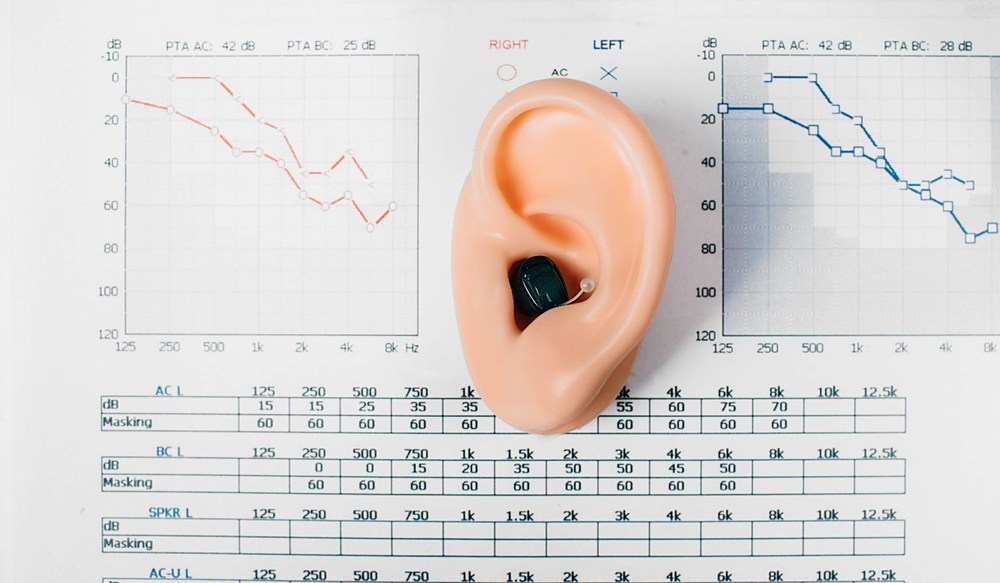The Impact of Hearing Loss on Relationships
Our hearing shapes every interaction we have with the people around us.

By: admin | April 30, 2024
Understanding social cues with hearing loss can sometimes feel like you’re trying to interpret a language you only partially understand. The subtleties of conversation, whispers and laughter can be hard to grasp. But don’t worry. It might seem overwhelming at first, but you can learn to understand social cues with hearing loss. With the right strategies and a bit of practice, you can improve your ability to perceive these cues and engage more in social interactions. Think of every challenge as an opportunity for growth and learning – something that will help you become a stronger communicator.
Non-verbal communication can be a strong ally in understanding social cues. This includes body language, facial expressions and gestures. These visual cues often provide a wealth of information that can help fill in the gaps when hearing is compromised.
While non-verbal communication can be a helpful tool, it’s important to recognize its pros and cons. On the plus side, it can offer valuable insights into a person’s emotions or intentions. For example, a smile or nod can confirm agreement, while folded arms might indicate discomfort or disagreement.
However, relying solely on non-verbal cues has its downsides too. Interpretation of these signals may vary widely between different cultures or individuals. Misinterpretations can occur, leading to confusion or misunderstanding. Therefore, using non-verbal cues should complement other strategies for understanding social interactions rather than being the only method used.
Now, let’s consider the impact of hearing loss on social exchanges. Communication is the heart of any social interaction. When hearing loss enters the picture, it can disrupt this flow and make these exchanges more challenging.
Hearing loss can cause you to miss out on important parts of a conversation, leading to misunderstandings or even feelings of isolation. These are valid concerns and it’s important to acknowledge them. But remember, acknowledging a problem is the first step towards finding a solution.
So, what can you do? First, don’t be afraid to seek help from hearing instrument specialists. They’re equipped with knowledge and tools that can assist you in managing your hearing difficulties effectively. Additionally, adopting strategies like focusing on non-verbal cues or using assistive listening devices can make a significant difference in your communication abilities. Remember, challenges are not roadblocks – they’re stepping stones towards growth and improvement!
In the hustle and bustle of social gatherings, it’s easy to feel overwhelmed. However, understanding some key aspects of non-verbal communication can be your secret weapon.
Keep an eye out for facial expressions and body language – they often convey emotions and attitudes. Also, observe gestures like nodding or shaking heads as they typically indicate agreement or disagreement.
Facial expressions serve as vital social cues, often speaking louder than words. They can convey a multitude of emotions and intentions, making them an essential component of non-verbal communication.
However, you may find it difficult to accurately interpret these expressions when dealing with hearing loss. To overcome this difficulty, consider seeking guidance from hearing instrument specialists. They can provide you with effective strategies and tools to better understand facial cues, enhancing your social interactions.
Paying attention to body language and posture can significantly enhance your dialogue experiences. It’s a skill that, when honed, can help you better understand the intentions and emotions of others.
Body language includes things like the way someone stands or sits, their gestures and even their eye movements. Here are some key points to observe:
Let’s take a closer look at the role of gestures in non-verbal communication. Gestures can be an incredibly valuable tool in understanding and participating in social interactions, especially when hearing loss is part of the equation. A simple thumbs up or down, for instance, can clearly convey agreement or disagreement without any need for sound.
Further emphasizing their importance, gestures can also help to clarify ambiguous situations. For example, a person pointing towards a door while speaking could be indicating that they are leaving or someone else is about to arrive. By paying attention to these visual cues, you can gain a deeper understanding of the conversation at hand and respond appropriately.
Let’s discuss the power of eye contact as a tool for conveying messages. Think of eye contact like the punctuation in a sentence. Just as punctuation helps give meaning and clarity to words, eye contact can provide context and depth to conversations. A steady gaze often signifies interest and attentiveness, while averted eyes might suggest discomfort or distraction. By observing these subtle cues, you can gain valuable insights into your social interactions despite any hearing challenges you may face.
Proximity refers to how close or far you are from someone else during a conversation. Personal space, on the other hand, is the physical distance that individuals prefer to keep between themselves and others. Both of these aspects play a significant role in shaping our social interactions.
Understanding proximity and personal space can greatly enhance your communication skills. For instance, standing too close might make someone feel uncomfortable, while standing too far away could come off as disinterested or aloof. By maintaining an appropriate distance, you can create a comfortable environment for conversation.
Respecting personal space is essential in fostering positive relationships with others. It shows consideration for their comfort and boundaries which can lead to more effective communication. In summary, understanding proximity and personal space not only improves your social interactions but also fosters mutual respect and understanding among individuals.
Building on the importance of non-verbal cues, we now turn our attention to the role of touch in communication. Touch, though often overlooked, is a powerful form of non-verbal communication that can convey a wide range of emotions and messages.
A simple handshake or pat on the back can speak volumes about comfort levels and intentions. These gestures can express support, empathy or agreement without uttering a single word. However, like other forms of non-verbal communication, touch also has its complexities.
Understanding the appropriate use and interpretation of touch is essential in social interactions. Cultural norms and personal boundaries play a significant role in how touch is perceived. While a friendly hug might be welcomed by some, it could make others uncomfortable. Therefore, being mindful of these factors when using touch as a form of communication can prevent misunderstandings and enhance your social interactions. It’s all about striking the right balance between expressing yourself effectively while respecting others’ comfort zones.
Did you know that about 70% of communication is non-verbal? This fact becomes especially important when hearing loss comes into play. While the spoken word may become harder to decipher, the world of non-verbal cues and contextual clues offers a rich tapestry of information that can help you stay engaged in conversations.
Relying on contextual clues during conversations has its pros and cons. On the plus side, these clues can provide additional insights into a conversation, helping to fill in any gaps caused by hearing loss. They can often reveal a speaker’s true feelings or intentions, adding depth to your understanding. However, there are some downsides too. For one, relying solely on contextual clues could lead to misunderstandings as these signals can sometimes be ambiguous or misinterpreted. Additionally, this approach requires a high level of focus and attention which might be tiring for some people. It’s all about finding the right balance – using contextual clues as an aid rather than a sole means of understanding conversations.
These methods are not just theoretical; they’re practical and can be incorporated into your daily life with ease. One of the most beneficial techniques is mindfulness. Being fully present in the moment allows you to observe and interpret social cues more accurately. It’s about paying attention to details like facial expressions, body language and even subtle changes in tone or volume of speech.
As we move forward, let’s consider how technology can be used to enhance your social interactions. Today’s world is increasingly digital, and this shift has brought about many tools that can assist those with hearing difficulties. From smartphone apps that provide real-time captioning to advanced hearing aids that can connect directly to your devices, technology offers a multitude of ways to improve your communication abilities.
For example, consider using speech-to-text apps during conversations. These apps convert spoken words into written text, allowing you to follow along even if you miss certain parts of the conversation. Similarly, there are also apps available that provide visual alerts for sounds like doorbells or fire alarms, ensuring you don’t miss important auditory cues in your environment.
Transitioning from self-help techniques, it’s important to recognize when professional guidance may be needed. Hearing instrument specialists can provide a wealth of knowledge and resources to assist you in managing your hearing loss. They can offer personalized advice and solutions tailored to your specific needs, helping you overcome the challenges posed by hearing difficulties. Their expertise can be invaluable in not only improving your ability to interpret social cues but also enhancing your overall quality of life. Don’t hesitate to reach out to these specialists for support – they’re here to help you on this path towards better communication and improved hearing health.
We invite you to take action today. If you’re seeking more guidance or have questions about managing hearing loss, reach out to us at Byron’s Hudson Valley Hearing Aid Centers. Our team of experienced hearing professionals is ready to assist and provide personalized solutions for your needs. We have three convenient New York locations, including:
Every step taken towards better understanding and managing your hearing loss is a step towards improved communication and enriched social interactions. We’re here to help make that journey easier for you.

Our hearing shapes every interaction we have with the people around us.
By: admin | January 26, 2025

Accepting changes in our hearing isn’t always straightforward. Many
By: admin | December 23, 2024

Finding the right hearing solution is essential to staying connected with
By: admin | September 25, 2024
